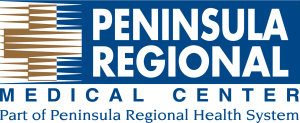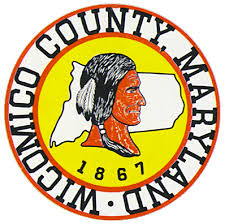
Nearly 800,000 people in the United States will have a stroke this year, and more than 7 million people in the U.S. today have survived a stroke. Still, most people cannot identify stroke warning signs or risk factors. Most of those strokes are preventable — some studies indicate that up to 80 percent of strokes can be prevented.
May is National Stroke Month, and Peninsula Regional Medical Center is highlighting the issue by hosting a special Stroke Support Group forum event that will bring together top specialists from the Medical Center to answer questions about stroke care and recovery. The event will be held on May 6, 2014 from 1 to 3 p.m. in the Hallowell Conference Center at Peninsula Regional Medical Center. Ask our panel of experts your questions: Jacek Malik, MD, Ph.D., neurosurgeon; Jeffery Anderson, DO, physiatrist; Richard Bird, MD, neurologist; Clark Willis, MD, emergency medicine; and Kevin Healy, PA, hospitalist. You’ll also meet other stroke survivors and their caregivers and learn about the resources the Stroke Support Group offers. Register by calling 410-912-7961.
Stroke is a particularly serious health issue on Delmarva. The Stroke Team at Peninsula Regional treats on average nearly 40 patients with stroke symptoms every month, volumes that rival centers like Johns Hopkins in Baltimore and others in much larger, urban areas. Once patients have had a stroke, Peninsula Regional Medical Center has been finding ways to improve their life afterward. Many rehabilitation programs are available, and the Medical Center hosts the Stroke Support Group every month.
Talk to your doctor about your stroke risk factors —there may be some you can changed. While genetics and age can’t be changed, high blood pressure, high cholesterol levels, smoking, excessive alcohol use and inactivity are all risk factors that you might be able to control.
There is one crucial piece of information to remember about strokes: When you have symptoms, don’t wait for them to go away. Go straight to the emergency room. Time means brain. The longer treatment is delayed, the more difficult stroke symptoms are to treat.
To spare yourself or a loved one from the most devastating effects a stroke can bring, learn to recognize the signs and symptoms of stroke. Learn FAST:
F — Face: Ask the person to smile. Does one side of the face droop?
A — Arms: Ask the person to raise both arms. Does one arm drift downward?
S — Speech: Ask the person to repeat a simple phrase. Does the speech sound slurred or strange?
T — Time: If you observe any of these signs, then it’s time to call 9-1-1.
Can be used as a box:
Did You Know?
- Stroke is the fourth leading cause of death in the U.S.
- Stroke is a leading cause of adult long-term disability.
- By 2030, it is estimated that 4 million people will have had a stroke. This is nearly 25 percent higher than 2010 estimates.
- Stroke is an emergency! It’s important to learn stroke warning signs and how to respond to them. If given within three hours of the first symptom, there is an FDA-approved clot-buster medication that may reduce long-term disability for the most common type of stroke.



